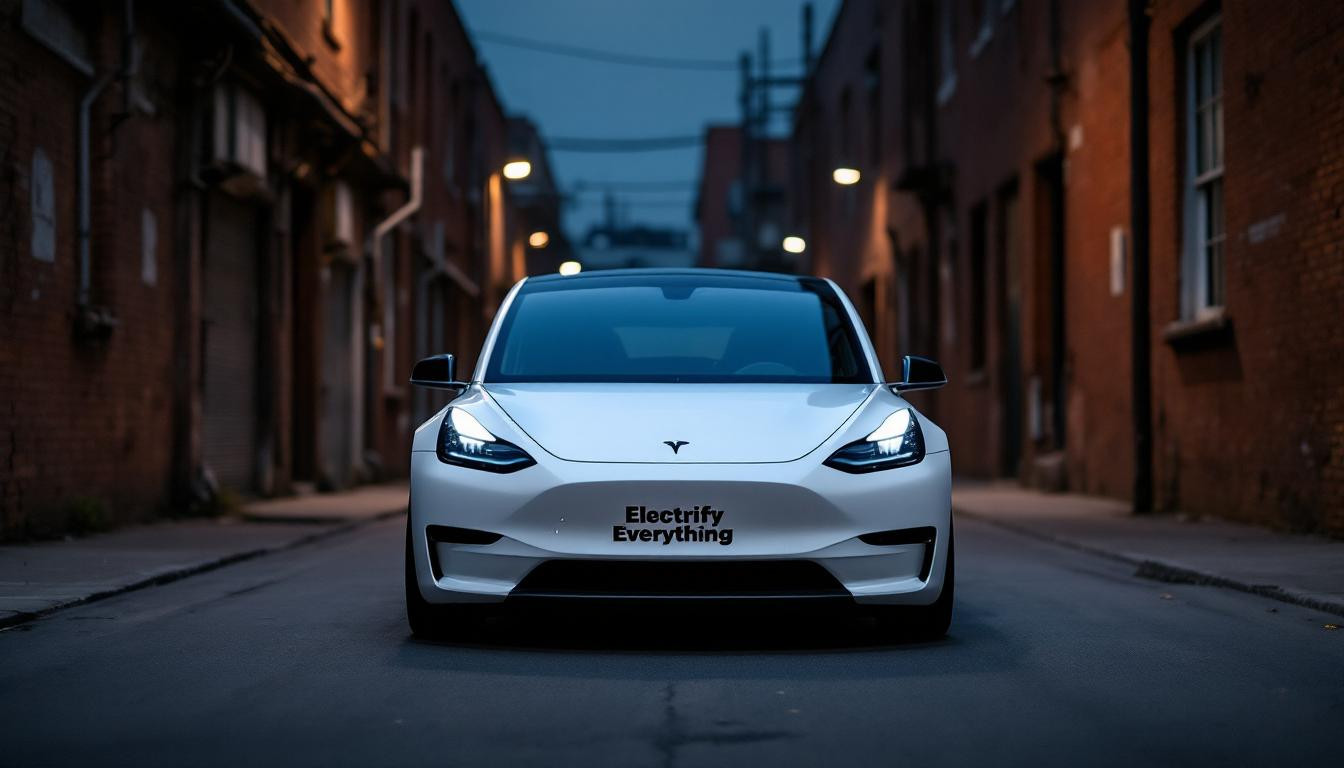The electric vehicle giant Tesla faces what industry analysts are calling its most significant crisis since its founding. As of spring 2025, the company is battling declining sales, political controversy, and intense market competition that threatens its dominance in the EV sector.
Tesla’s market freefall: Why sales have collapsed across continents
Tesla has recorded a staggering 55% drop in net profit during Q1 2025, with European sales halved compared to the same period last year. The decline is particularly pronounced in Germany (-70.6%), France (-44.4%), and the UK (-35.2%), while Chinese registrations have plummeted by 49% in February alone.
“We struggle to think of anything analogous in the history of the automotive industry, in which a brand has lost so much value so quickly,” noted JPMorgan analysts in their March investor brief, highlighting the unprecedented nature of Tesla’s downfall.
Elon Musk’s political controversies fuel consumer backlash
Elon Musk’s high-profile political alignment has triggered significant consumer resistance. Tesla owners across Europe and coastal American states have been spotted with bumper stickers reading: “I bought this before Elon went crazy.” This sentiment is affecting potential buyers who might otherwise consider alternative vehicle options.
“Tesla is going through a crisis and there is one person who can fix it—Musk,” states Dan Ives, a leading technology analyst. “The brand damage has been severe, and it’s directly connected to the CEO’s political activities.”
Stock collapse: $800 billion in value evaporated
Tesla’s stock has experienced a 15% single-day decline in March 2025, contributing to a market capitalization loss of approximately $800 billion from its peak. This financial downturn is prompting many investors to reconsider their investment strategies and diversify away from the once-untouchable EV leader.
The 2025 Model Y: Too little, too late?
The redesigned Model Y, Tesla’s latest offering, boasts impressive specifications:
- Range: Up to 335 miles (Long Range AWD)
- Price: Starting at £51,990 for base models
- Technology: Enhanced 15.4-inch display and improved noise reduction
However, production delays and recalibration of manufacturing facilities have created supply constraints, further contributing to Tesla’s sales decline during this critical period.
Technical reliability concerns mount
Users have reported persistent issues with Tesla’s Full Self-Driving (FSD) technology, including frequent disengagements and safety warnings. After five “strikes” for inattention, the system suspends access for seven days—a policy that has frustrated many subscribers.
“I canceled my FSD subscription after experiencing three disengagements during a single journey,” confessed a longtime Tesla owner. “The system feels fundamentally unsafe and unpredictable.”
Competition intensifies from all directions
Chinese manufacturer BYD threatens to overtake Tesla as the world’s largest EV producer, while European brands like Volkswagen and Renault have significantly improved their electric offerings. This competitive pressure has financial implications for Tesla’s long-term stability.
The delayed affordable Tesla: A strategic misstep
Tesla has again postponed the release of its €25,000 mass-market vehicle, a decision criticized for limiting access to a broader customer base. Meanwhile, competitors are actively targeting this price segment with compelling alternatives.
Howard Lutnick, Secretary of Commerce, optimistically claimed, “It’ll never be this cheap again,” but market analysts remain skeptical about Tesla’s ability to regain momentum without an affordable offering.
Looking ahead: Can Tesla weather the storm?
Despite these challenges, Tesla continues to innovate with software updates and improved vehicle features. The company’s success in navigating this crisis will depend on balancing innovation with financial stability and image management.
As a longtime Tesla employee noted, “There’s been so many ups and downs at Tesla, you get desensitized at a certain point.” Whether this philosophical approach will translate into concrete recovery strategies remains the crucial question for Tesla’s future in the increasingly competitive electric vehicle landscape.
